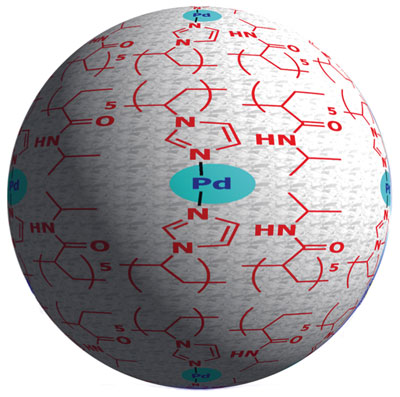EngineerbloggerJan 16, 2011  |
| In this May 16, 2008, file photo, Newbery Crater project drilling manager Fred Wilson stands near a drilling rig at the Newberry Crater geothermal project as he describes the work near LaPine, Ore. Geothermal energy developers plan to pump 24 million gallons of water into the side of the dormant Central Oregon volcano this summer to demonstrate new technology they hope will give a boost to a green energy sector that has yet to live up to its promise. (AP Photo/Don Ryan, File) |
Geothermal energy developers plan to pump 24 million gallons of water into the side of a dormant volcano in Central Oregon this summer to demonstrate new technology they hope will give a boost to a green energy sector that has yet to live up to its promise.
They hope the water comes back to the surface fast enough and hot enough to create cheap, clean electricity that isn't dependent on sunny skies or stiff breezes—without shaking the earth and rattling the nerves of nearby residents.
Renewable energy has been held back by cheap natural gas, weak demand for power and waning political concern over global warming. Efforts to use the earth's heat to generate power, known as geothermal energy, have been further hampered by technical problems and worries that tapping it can cause earthquakes.
Even so, the federal government, Google and other investors are interested enough to bet $43 million on the Oregon project. They are helping AltaRock Energy, Inc. of Seattle and Davenport Newberry Holdings LLC of Stamford, Conn., demonstrate whether the next level in geothermal power development can work on the flanks of Newberrry Volcano, located about 20 miles south of Bend, Ore.
"We know the heat is there," said Susan Petty, president of AltaRock. "The big issue is can we circulate enough water through the system to make it economic."
The heat in the earth's crust has been used to generate power for more than a century. Engineers gather hot water or steam that bubbles near the surface and use it to spin a turbine that creates electricity. Most of those areas have been exploited. The new frontier is places with hot rocks, but no cracks in the rocks or water to deliver the steam.
To tap that heat—and grow geothermal energy from a tiny niche into an important source of green energy—engineers are working on a new technology called Enhanced Geothermal Systems.
"To build geothermal in a big way beyond where it is now requires new technology, and that is where EGS comes in," said Steve Hickman, a research geophysicist with the U.S. Geological Survey in Menlo Park, Calif.
Wells are drilled deep into the rock and water is pumped in, creating tiny fractures in the rock, a process known as hydroshearing.
Cold water is pumped down production wells into the reservoir, and the steam is drawn out.
Hydroshearing is similar to the process known as hydraulic fracturing, used to free natural gas from shale formations. But fracking uses chemical-laden fluids, and creates huge fractures. Pumping fracking wastewater deep underground for disposal likely led to recent earthquakes in Arkansas and Ohio.
Fears persist that cracking rock deep underground through hydroshearing can also lead to damaging quakes. EGS has other problems. It is hard to create a reservoir big enough to run a commercial power plant.
Progress has been slow. Two small plants are online in France and Germany. A third in downtown Basel, Switzerland, was shut down over earthquake complaints. A project in Australia has had drilling problems.
A new international protocol is coming out at the end of this month that urges EGS developers to keep projects out of urban areas, the so-called "sanity test," said Ernie Majer, a seismologist with the Lawrence Berkeley National Laboratory. It also urges developers to be upfront with local residents so they know exactly what is going on.
AltaRock hopes to demonstrate a new technology for creating bigger reservoirs that is based on the plastic polymers used to make biodegradable cups.
It worked in existing geothermal fields. Newberry will show if it works in a brand new EGS field, and in a different kind of geology, volcanic rock, said Colin Williams, a USGS geophysicist also in Menlo Park.
The U.S. Department of Energy has given the project $21.5 million in stimulus funds. That has been matched by private investors, among them Google with $6.3 million.
Majer said the danger of a major quake at Newbery is very low. The area is a kind of seismic dead zone, with no significant faults. It is far enough from population centers to make property damage unlikely. And the layers of volcanic ash built up over millennia dampen any shaking.
But the Department of Energy will be keeping a close eye on the project, and any significant quakes would shut it down at least temporarily, he said. The agency is also monitoring EGS projects at existing geothermal fields in California, Nevada and Idaho.
"That's the $64,000 question," Majer said. "What's the biggest earthquake we can have from induced seismicity that the public can worry about."
Geologists believe Newberry Volcano was once one of the tallest peaks in the Cascades, reaching an elevation of 10,000 feet and a diameter of 20 miles. It blew its top before the last Ice Age, leaving a caldera studded with towering lava flows, two lakes, and 400 cinder cones, some 400 feet tall.
Although the volcano has not erupted in 1,300 years, hot rocks close to the surface drew exploratory wells in the 1980s.
Over 21 days, AltaRock will pour 800 gallons of water per minute into the 10,600-foot test well, already drilled, for a total of 24 million gallons. According to plan, the cold water cracks the rock. The tiny plastic particles pumped down the well seal off the cracks. Then more cold water goes in, bypassing the first tier, and cracking the rock deeper in the well. That tier is sealed off, and cold water cracks a third section. Later, the plastic melts away.
Seismic sensors produce detailed maps of the fracturing, expected to produce a reservoir of cracks starting about 6,000 feet below the surface, and extending to 11,000 feet. It would be about 3,300 feet in diameter.
The U.S. Bureau of Land Management released an environmental assessment of the Newberry project last month that does not foresee any problems that would stop it. The agency is taking public comments before making a final decision in coming months.
No power plant is proposed, but one could be operating in about 10 years, said Doug Perry, president and CEO of Davenport Newberry.
EGS is attractive because it vastly expands the potential for geothermal power, which, unlike wind and solar, produces power around the clock in any weather.
Natural geothermal resources account for about 0.3% of U.S. electricity production, but a 2007 Massachusetts Institute of Technology report projected EGS could bump that to 10% within 50 years, at prices competitive with fossil-fuels.
Few people expect that kind of timetable now. Electricity prices have fallen sharply because of low natural gas prices and weak demand brought about by the Great Recession and state efficiency programs.
But the resource is vast. A 2008 USGS assessment found EGS throughout the West, where hot rocks are closer to the surface than in the East, has the potential to produce half the country's electricity.
"The important question we need to answer now," said Williams, the USGS geophysicist who compiled the assessment, "is how geothermal fits into the renewable energy picture, and how EGS fits. How much it is going to cost, and how much is available."
Source: The Associated Press



























.jpg)

